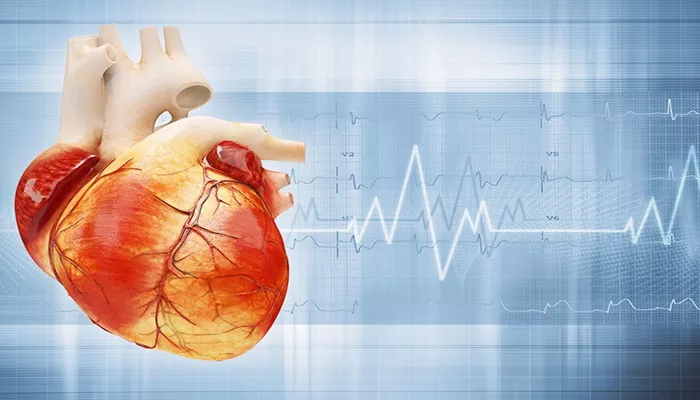Bradycardia is a condition where the heart beats more slowly than normal—usually fewer than 60 beats per minute. In some cases, bradycardia is harmless or even beneficial, such as in well-trained athletes. However, when a slow heart rate causes fatigue, dizziness, or fainting, it may require intervention. Understanding how to raise the heart rate safely and effectively in patients with bradycardia is essential for preserving cardiovascular health. This article offers a detailed, professional guide on this topic.
Understanding Bradycardia
Bradycardia originates in the heart’s electrical system. It may be caused by intrinsic damage to the sinus node or issues within the conduction pathways. Sometimes, external factors like medications or metabolic disorders can also slow the heart rate. Recognizing the source of bradycardia is key to determining how to increase heart rate appropriately.
Normal vs. Abnormal Bradycardia
In athletes and healthy individuals, a slow heart rate may reflect increased vagal tone and improved cardiac efficiency. This is known as physiologic bradycardia and usually doesn’t require treatment. Pathologic bradycardia, on the other hand, leads to poor perfusion and symptoms such as:
- Fatigue
- Dizziness
- Shortness of breath
- Fainting (syncope)
- Exercise intolerance
When to Raise Heart Rate in Bradycardia
Not all bradycardia requires treatment. The decision to raise heart rate depends on symptoms and underlying causes. Treatment is usually recommended when:
- The patient is symptomatic.
- The heart rate falls below 40 bpm consistently.
- There is evidence of sinus node dysfunction or heart block.
- Cardiac output is compromised.
Methods to Raise Heart Rate
The strategies to raise heart rate in bradycardia include non-pharmacologic methods, medications, and surgical interventions. The approach depends on the underlying cause and severity of symptoms.
Lifestyle Modifications
Simple lifestyle changes can help improve heart rate, especially when bradycardia is mild or related to external factors.
Increase Physical Activity
Regular aerobic exercise like brisk walking, cycling, or swimming can improve the heart’s responsiveness. Exercise stimulates the sympathetic nervous system, which increases heart rate naturally over time.
Avoid Excessive Vagal Stimulation
Activities or habits that enhance vagal tone can lower heart rate. These include heavy straining during bowel movements, prolonged bed rest, or certain breathing techniques. Reducing these can help raise heart rate.
Review Sleep Habits
Bradycardia is common during sleep. However, conditions such as sleep apnea can lead to abnormally low nighttime heart rates. Evaluating and treating sleep disorders may help stabilize heart rate.
Stay Hydrated and Manage Electrolytes
Dehydration and electrolyte imbalances can impact cardiac rhythm. Ensuring proper hydration and adequate potassium, magnesium, and calcium intake supports normal cardiac conduction.
Pharmacologic Treatment
When symptoms are more severe or heart rate is dangerously low, medications can be used to increase heart rate temporarily or permanently.
Atropine
Atropine is an anticholinergic drug used in emergency settings to raise heart rate quickly. It works by blocking parasympathetic influences on the heart, particularly the vagus nerve. It is often the first line in symptomatic bradycardia.
Sympathomimetic Drugs
Drugs such as isoproterenol and dopamine can be used to stimulate the heart in acute settings. These drugs mimic the effects of adrenaline and increase heart rate and cardiac output. They are usually administered intravenously in hospital settings.
Theophylline
Theophylline is sometimes used in chronic bradycardia where pacemaker therapy is not yet indicated. It works by relaxing smooth muscle and stimulating the central nervous system, indirectly increasing the heart rate.
Adjusting Current Medications
Some medications can contribute to bradycardia, including:
- Beta-blockers
- Calcium channel blockers
- Digoxin
Reducing the dose or switching to alternatives can help raise heart rate.
Medical Devices: Pacemaker Therapy
When medications are not effective or bradycardia is persistent and symptomatic, pacemaker implantation becomes necessary.
Indications for a Pacemaker
A pacemaker is indicated in patients with:
- Sinus node dysfunction
- High-grade or complete AV block
- Symptomatic bradycardia unresponsive to medications
Types of Pacemakers
There are various types of pacemakers depending on the patient’s needs:
- Single-chamber: Paces either the right atrium or ventricle
- Dual-chamber: Coordinates pacing between both atrium and ventricle
- Rate-responsive: Adjusts pacing based on the patient’s activity levels
Benefits of Pacemaker
Pacemakers are highly effective in stabilizing heart rate, relieving symptoms, and improving quality of life. They offer a long-term solution for those with irreversible causes of bradycardia.
Addressing Reversible Causes of Bradycardia
In many cases, bradycardia results from reversible conditions. Identifying and correcting these can help raise heart rate without invasive treatments.
Hypothyroidism
Low thyroid hormone levels can lead to decreased heart rate. Treating hypothyroidism with levothyroxine usually restores normal rhythm.
Infections or Inflammation
Myocarditis or endocarditis can damage the heart’s electrical system. Treating the infection can improve conduction and normalize heart rate.
Electrolyte Imbalances
Correcting low potassium, magnesium, or calcium levels can resolve bradycardia associated with these abnormalities.
Medication Toxicity
Toxic levels of digoxin, lithium, or other drugs can suppress cardiac conduction. Adjusting the dose or discontinuing the medication helps restore heart rate.
Monitoring and Follow-up
Raising heart rate in bradycardia requires ongoing monitoring. Physicians must evaluate the effectiveness of treatment and adjust as needed.
Regular ECG Monitoring
Electrocardiograms help track heart rate changes and identify any new arrhythmias. Long-term monitoring with Holter or event monitors may be necessary in some patients.
Cardiology Evaluation
Patients with complex or symptomatic bradycardia should be referred to a cardiologist. Electrophysiological studies may be performed to pinpoint the cause and guide therapy.
Patient Education
Educating patients about signs of worsening bradycardia and when to seek help is crucial. Symptoms like chest pain, syncope, or extreme fatigue require prompt medical attention.
Conclusion
Raising heart rate in bradycardia is a nuanced process that requires careful evaluation of the underlying cause and symptoms. Lifestyle adjustments, medications, and pacemaker therapy each play a role depending on the clinical scenario.
By addressing both reversible and irreversible factors, clinicians can improve patient outcomes and quality of life. Ongoing follow-up and patient education are key to long-term management.
Related topics:


